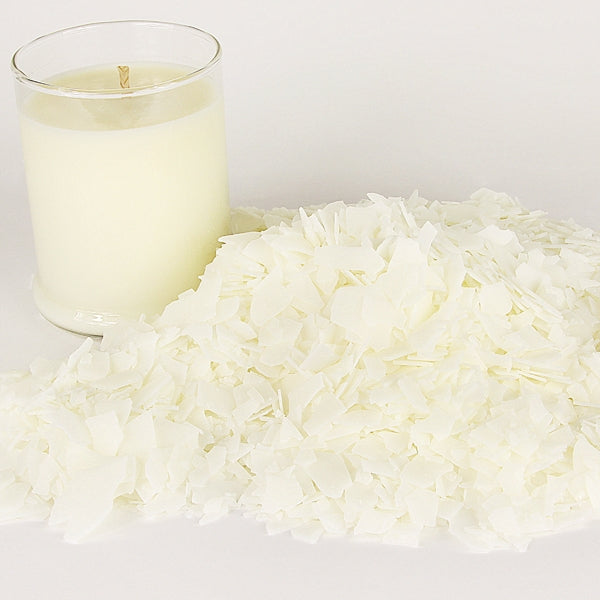Check out the World of Crystal Soy Candles and Home Fragrance Thrills
Check out the World of Crystal Soy Candles and Home Fragrance Thrills
Blog Article
From Wick to Wax: Recognizing the Chemistry Behind Soy Wax Candles and Their Ecological Impact
As we illuminate our rooms with the cozy glow of candles, there exists a realm of intricate chemistry behind the seemingly straightforward act of lighting a soy wax candle. The selection in between soy and paraffin wax expands beyond plain visual appeals, delving into the world of ecological impact and the really structure of the products. Understanding the molecular framework of soy wax and its burning process clarifies the discharges launched into our surroundings. Join us as we untangle the scientific intricacies behind soy wax candles and explore their ramifications on our environment.
Soy Wax Vs. Paraffin Wax
When comparing soy wax and paraffin wax for candle light making, it is important to comprehend the distinct features and advantages of each product. Soy wax is a natural, renewable resource stemmed from soybean oil, making it biodegradable and environment-friendly - candles. On the other hand, paraffin wax is a by-product of petroleum refining, which raises problems regarding its environmental influence and sustainability
Soy wax candle lights melt cleaner and discharge much less soot contrasted to paraffin wax candle lights, making them a healthier choice for indoor air quality. In addition, soy wax has a lower melting point, permitting for a longer-lasting candle that disperses scent better. Paraffin wax, on the other hand, tends to melt faster and much less cleanly, potentially launching unsafe chemicals right into the air.
From a sustainability point of view, soy wax is preferred for its biodegradability and sustainable sourcing, aligning with the expanding consumer preference for ecologically aware products. While paraffin wax has been a traditional option in candle making due to its cost and ease of use, the shift towards green alternatives like soy wax is acquiring momentum in the industry.
Chemical Composition of Soy Wax

Burning Process in Soy Candles
The chemical structure of soy wax directly affects the burning procedure in soy candle lights, impacting variables such as melt time, fragrance launch, and ecological impact. When a soy candle is lit, the warm from the fire thaws the wax near the wick. This fluid wax is then prepared the wick due to capillary action. As the fluid wax gets to the fire, it goes through and evaporates combustion. The burning process involves the vaporized hydrocarbons in continue reading this the wax reacting with oxygen in the air to create warm, light, water vapor, and co2.
The burning effectiveness of soy candles is affected by the purity of the soy wax and the quality of the wick. A clean-burning soy candle with a properly sized wick will minimize and create a stable fire residue development. This not just extends the melt time of the candle yet likewise enhances the release of scents. In addition, soy wax candle lights have a lower ecological influence compared to paraffin candle lights because of their eco-friendly and biodegradable nature.

Ecological Benefits of Soy Wax

Considered a sustainable option to traditional paraffin wax, soy wax supplies noteworthy environmental advantages that make it a popular choice amongst eco-conscious consumers. Soy wax burns cleaner and generates less soot than paraffin wax, adding to much better interior air top quality and decreasing the requirement for cleansing and maintenance. Overall, the ecological benefits of soy wax align with the expanding demand for sustainable and environment-friendly items in the market.
Recycling and Disposal Factors To Consider
Recycling and proper disposal of soy wax candles play an essential role in preserving ecological sustainability and minimizing waste in neighborhoods and households. The very first action is to guarantee that the candle has melted totally when it comes to reusing soy wax candle lights. This can be attained by enabling the candle to burn till the wick is no longer functional, and after that letting the continuing to be wax cool and strengthen. As soon as the wax has actually strengthened, it can be carefully gotten rid of from the container.

In regards to disposal, if recycling is not an alternative, soy wax candles are naturally degradable and can be securely disposed of in most home waste systems. However, it is always advised to consult neighborhood recycling centers or waste management services for details standards on candle light disposal to guarantee correct handling and ecological security.
Final Thought
To conclude, the chemistry behind soy wax candles reveals their environmental advantages over paraffin wax candles. Soy wax, acquired from soybean oil, burns cleaner and produces less soot when contrasted to paraffin wax. The combustion process in soy candles is a lot more effective, resulting in a longer and extra even melt. Furthermore, soy wax is biodegradable and eco-friendly, making it an extra lasting option for candle production. Recycling find more and correct disposal of soy wax candles even more add to their ecological impact.
When contrasting soy wax and paraffin wax for candle light making, it is important to understand the distinctive attributes and advantages of each material (candles).Soy wax candles shed cleaner and release less residue contrasted to paraffin wax candles, making them a much healthier selection for indoor air top quality.Considered a lasting option to typical paraffin wax, soy wax uses notable environmental advantages that make it a prominent selection amongst eco-conscious consumers. Soy wax burns cleaner and produces less soot than paraffin wax, adding to better indoor air top quality and decreasing the demand for cleansing and upkeep.In verdict, the chemistry behind soy wax candles discloses their ecological benefits over paraffin wax candles
Report this page